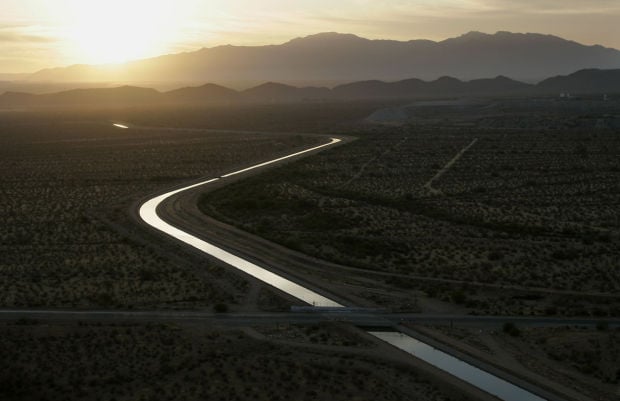Tuesday morning, the sprinklers went off on the tiny patch of grass in our backyard.
Eventually the sound of the water pinging off a metal pipe penetrated my foggy morning brain, and I went out and turned it off. There was just one minute left in the cycle, so I didn’t save much water.
It seems to me that most of Tucson has a foggy brain when it comes to our awareness of the current water crisis. We have been at a Stage 1 drought response in Tucson for 18 years, and the effect seems to have worn off. We know something is going on, but may not have the sharpness to get up and do anything about it.
What the leaders of the Bureau of Reclamation said last week may be enough to wake us up. Brenda Burman, a UA law school grad who heads the bureau, told the Imperial Irrigation District board there’s a risk that under current climatic trends, Lake Mead will eventually drop to such a low level that it will become a “dead pool.”
That would mean we can’t take any water from it. Only Las Vegas, which installed a pump at the bottom of the lake at a cost of more than $1 billion, would be able to move the water out.
“We absolutely need more action on the Colorado River. The risk we are facing right now is too great,” Burman said. “It’s time for us to look at ourselves and say, ‘What are we doing? What are we doing so that 10 years from now, 20 years from now, 40 years from now, the people who depend on the water we’re using right now are able to use it?’ ”
Not bad for an appointee in the climate-change-denying Trump administration.
The all-out effort she’s requesting is for all the entities who use the lower Colorado River to get together and establish a drought contingency plan, and that way forestall a shortage on Lake Mead. Ideas have been passed around among the entities, but not with enough urgency to come up with a formal plan yet.
History shows conservation is the only sure way out of the pickle we’re in, as Terry Fulp, regional director of the Lower Colorado River basin for the Bureau of Reclamation, pointed out during the same Imperial Valley meeting.
Lake Mead is 20 feet higher now than it would have been without conservation efforts put in place about a decade ago, Fulp said.
“Our message here is we must continue to do these efforts. Conservation is the key,” he said. “What we want to make sure is we prevent that lake from crashing, if this drought continues.”
The lake is at 1,081 feet now. An initial shortage would be declared at 1,075 feet. Tucson would likely have to start taking cuts at 1,025 feet.
Tucson Water is not declaring a Stage 2 drought yet. Its Drought Preparedness and Response Plan, written in 2006 and last updated in 2012, says Stage 2 should be declared only after Lake Mead hits the initial shortage stage, 1,075 feet.
The steps required in Stage 1 are tiny and mainly include efforts such as self-audits by city government of its own operations.
It isn’t even required that the city implement the potential savings discovered in the audits.
As Lake Mead drops and the drought deepens, though, the city is offering to perform audits for big commercial water users, Tucson Water spokesman Fernando Molina said.
The idea is to get them saving water before a shortage is declared and we move on to Stage 2. But it’s worth asking why we should wait to move to that stage. The Stage 2 requirements are not that demanding, either, and include actually putting in place the potential reductions uncovered in the Stage 1 audits. Other steps in Stage 2 include:
- Asking all potable water users to make additional, voluntary reductions.
- Requiring self-audits for multi-family users, and for commercial and industrial users that consume at least 325 hundreds of cubic feet (Ccf’s) per month.
- Restricting irrigation for multi-family, commercial, and industrial customers, with potential exemptions or variances available for sites demonstrating that minimum efficiency criteria are met and maintained.
Molina noted that it’s unclear if the city will be able to pay for all the audits required under Stage 2, so that’s one reason it hesitates to require them yet.
But these are not drastic measures, and if the Bureau of Reclamation’s leaders are right, they’re the least we can do to keep holding off a crisis. They’re the kind of things you do when you’re awake and attuned to the problem.





